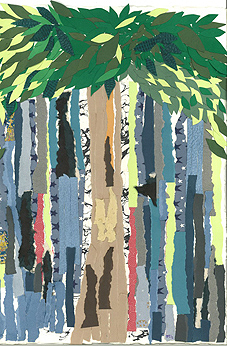Modernity and Public Sphere in Vernacular
Purushottam Agrawal
I confess, I am one of those who feel very anxious when told by some theoreticians that hardly any fit exists between ’-etic’ categories and ’-emic’ notions. The suitability of any category of analysis does not flow from its geographical provenance but from its capacity to illuminate the phenomenon under examination. Such an illumination has to be sensitive to both similarity and difference of various practices, values and organizations. Many interesting and thought-provoking tools of analysis are more or less capable of being disentangled from the programmatic strand or the specific social context of their own evolution; otherwise no dialogue across the civilizations could have been possible. In case of public sphere also, more important than the issue of etic and emic is its potential of illuminating the phenomenon under examination. Incidentally, Rene Guenon, who is credited with developing the Traditionalist critique of the modern world, and had a great influence on Ananda Coomaraswamy, used the Hindu notion of Kaliyuga as an analytical category to explain the “decay“ of the Western “modern world“ and proposed Sufi Islam as an antidote to this decay.11 Kaliyuga in Hindu tradition is not just a temporal category indicating the fourth stage of the time-cycle; it also refers to an all-round moral decay. Guenon’s proposal ought to be critiqued on the basis of its capacity to illuminate the phenomenon under consideration or lack of it, not on the basis of the notion of Kaliyuga and the practice and ideology of Sufism not being native to Europe. A category of analysis needs to be context-sensitive and not necessarily context-specific. Valid questions would be: does Kaliyuga as a category for analyzing the ’decay ’ meet the requirement of context-sensitivity? Can it be suitably modified to fit the notions and practices native to Europe and does it help us better understand the dynamics of the perceived crisis of Western civilization? So far, “the bulk of discussion of ’public sphere’ in South Asia has concentrated on the colonial period and has had as its implicit (and occasionally explicit) assumption that both the thing itself and reflection on the question were introduced by the British.“12 Naturally therefore, what to talk of the public sphere of Bhakti, any uses of the terms like public sphere, information order and ecumene in the context of pre-colonial India, are met with skepticism.13 To talk of the public sphere of Bhakti is not to talk of a “public sphere“ of exactly and strictly the European variety. In other words, public opinion and sentiments can be articulated and formed at places other than coffee- houses. Instead of looking for the replica of the bourgeois public sphere and the processes causing its structural transformation, we should explore the dynamics of ideas, institutions and practices that made the perceptible change in attitudes and practices in the 15th-16th century India possible. Such an exploration is mandated by the simple fact of poet-practitioners of Bhakti not being the self-contained sadhakas (i.e. spiritual practitioners) − indifferent to society around them. They indulged in sustained debates and sharp polemics and thus sought, as it were, to win friends and influence people. The founders of the two main competitive branches of the Kabirpanth (collectivity of the followers of Kabir) are not recognized as significant poets in the history of literature, but their “own“ people greatly revere them for organizing a collectivity dedicated to the teachings of Kabir. Similar collectivities–panths and sampradays–were constructed around other major figures, deities or the themes of Bhakti. And one of these, the Pushti-Marg founded by Vallabhacharya, is well-known for its systematic attempts to win over the support of influential political figures of the time. Sri Sankaradeva in the far eastern state of Assam is credited with establishing the institution of Naam-ghar (house of the Name) which has played and continues, till today, to play a crucial role in the social and political history of Assam. Pages: 1 2 3 4 5 6 7 8 |
Essays in this Forum
Rethinking the Global South
by Mukoma Wa Ngugi From Indian Literature to World Literature: A Conversation with Satya P. Mohanty by Rashmi Dube Bhatnagar and Rajender Kaur Asia in My Life by Ngugi wa Thiong'o The Global South and Cultural Struggles: On the Afro-Asian People’s Solidarity Organization by Duncan Mceachern Yoon The Fault Lines of Hindi and Urdu by Sanjay Kumar Reframing Colonialism and Modernity: An Endeavour through Sociology and Literature by Gurminder K. Bhambra Varieties of Cultural Chauvinism and the Relevance of Comparative Studies by Tilottoma Misra Literature to Combat Cultural Chauvinism: A Response by Shivani Jha Is There an Indian Way of Thinking about Comparative Literature? by E. V. Ramakrishnan Modernity and Public Sphere in Vernacular by Purushottam Agrawal West Indian Writers and Cultural Chauvinism by Jerome Teelucksingh Oral Knowledge in Berber Women’s Expressions of the Sacred by Fatima Sadiki |
